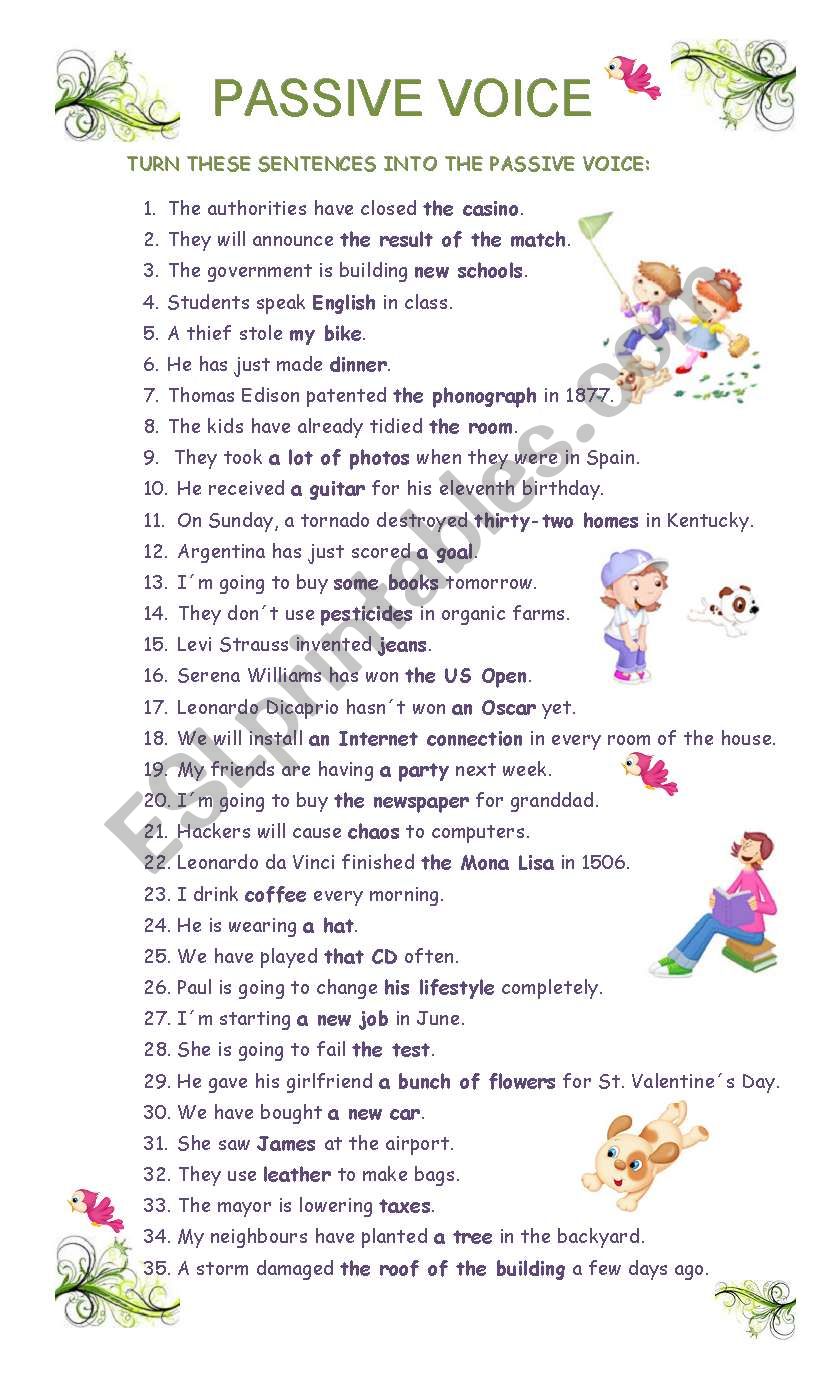
Mastering Nuance: The Indispensable Role of Passive Voice Exercises for Upper-Intermediate ESL Worksheets
For English as a Second Language (ESL) learners at the upper-intermediate level, the journey towards fluency extends far beyond basic grammar. At this stage, students are not just learning rules; they are refining their ability to use English accurately, appropriately, and with nuance in a wide array of contexts. One grammatical structure that presents a particular challenge, yet is crucial for sophisticated communication, is the passive voice. While elementary and intermediate learners might grasp its basic form, true mastery for upper-intermediate students involves understanding its various tenses, modal constructions, reporting verbs, and, most importantly, when and why to use it effectively. This is where well-designed Passive voice exercises for upper-intermediate ESL worksheets become an invaluable resource, providing targeted practice that solidifies understanding and builds confidence.
The Nuance of Passive Voice for Upper-Intermediate Learners
At the upper-intermediate level, students are expected to move beyond simple active-to-passive transformations. They encounter the passive voice frequently in academic texts, news reports, scientific articles, and formal discussions. Their understanding needs to deepen to include:

- All Tenses: While simple present and past passive are foundational, upper-intermediate learners must comfortably navigate the passive in present perfect, past perfect, future simple, future perfect, and even continuous tenses (e.g., "The report is being written").
- Modal Passives: The ability to use modal verbs (can, could, may, might, must, should, would) with the passive voice is essential for expressing possibility, obligation, advice, and speculation (e.g., "The problem can be solved," "The email should have been sent").
- Causative Passive (Have/Get Something Done): This structure, where the subject arranges for someone else to perform an action, is frequently used and often confusing (e.g., "I had my hair cut," "She got her car repaired").
- Passive with Reporting Verbs: Constructions like "It is said that…", "He is believed to be…", or "They are thought to have…" are prevalent in formal and journalistic English and require careful practice.
- Impersonal vs. Personal Passive: Understanding when to use the impersonal "It is believed that…" versus the personal "He is believed to be…" is a mark of advanced proficiency.
- The Agent (by + noun): Knowing when to include the agent and, more importantly, when to omit it (when the agent is unknown, obvious, or unimportant) is a key aspect of natural-sounding passive voice usage.
- Phrasal Verbs in Passive: Many common phrasal verbs can be used in the passive voice, adding another layer of complexity (e.g., "The meeting was called off," "The issue was looked into").
- Strategic Use: Perhaps most critically, upper-intermediate students need to develop a sense of when the passive voice is appropriate – for objectivity, emphasis on the action rather than the doer, or when the doer is unknown or irrelevant. Overuse of the passive voice can lead to convoluted sentences, while underuse can limit stylistic options.
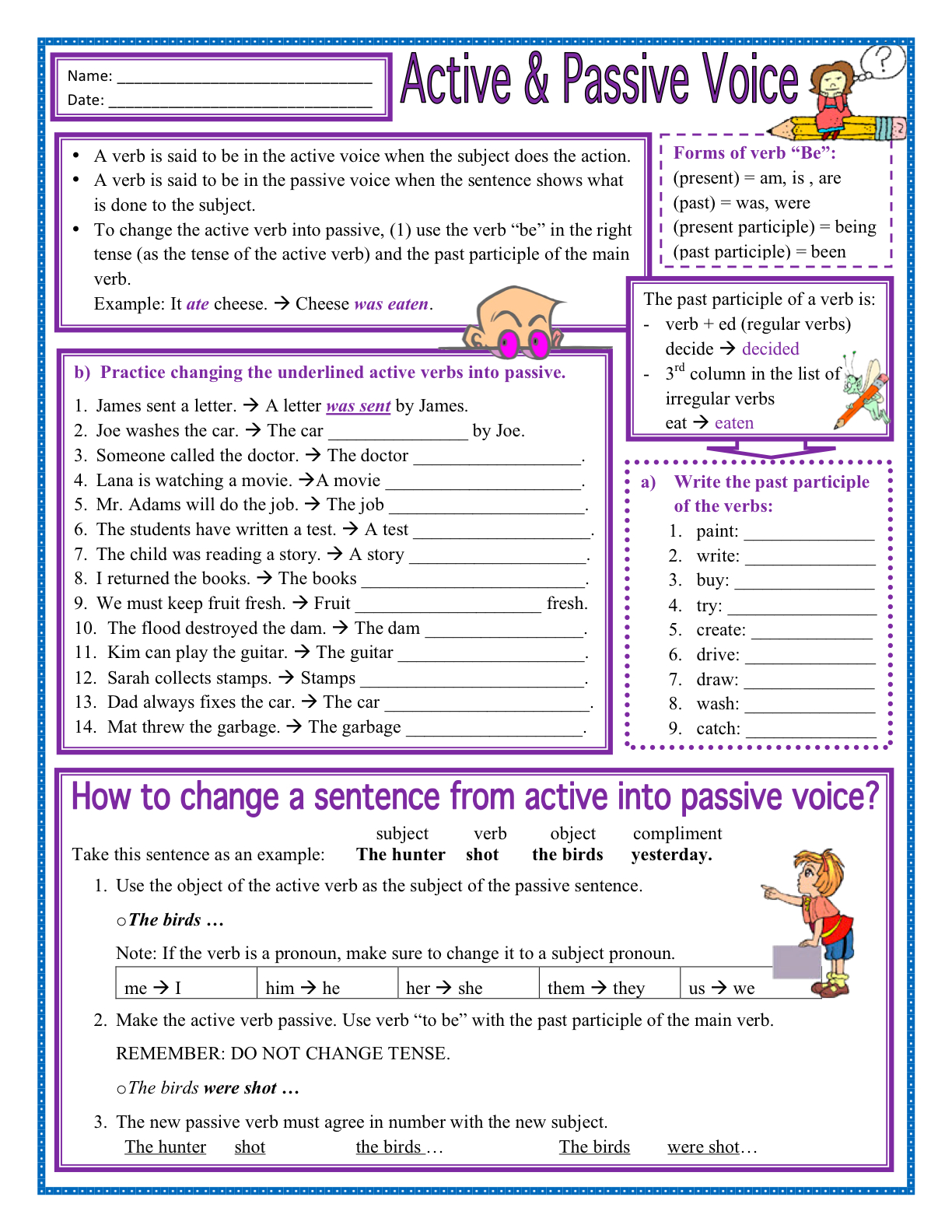

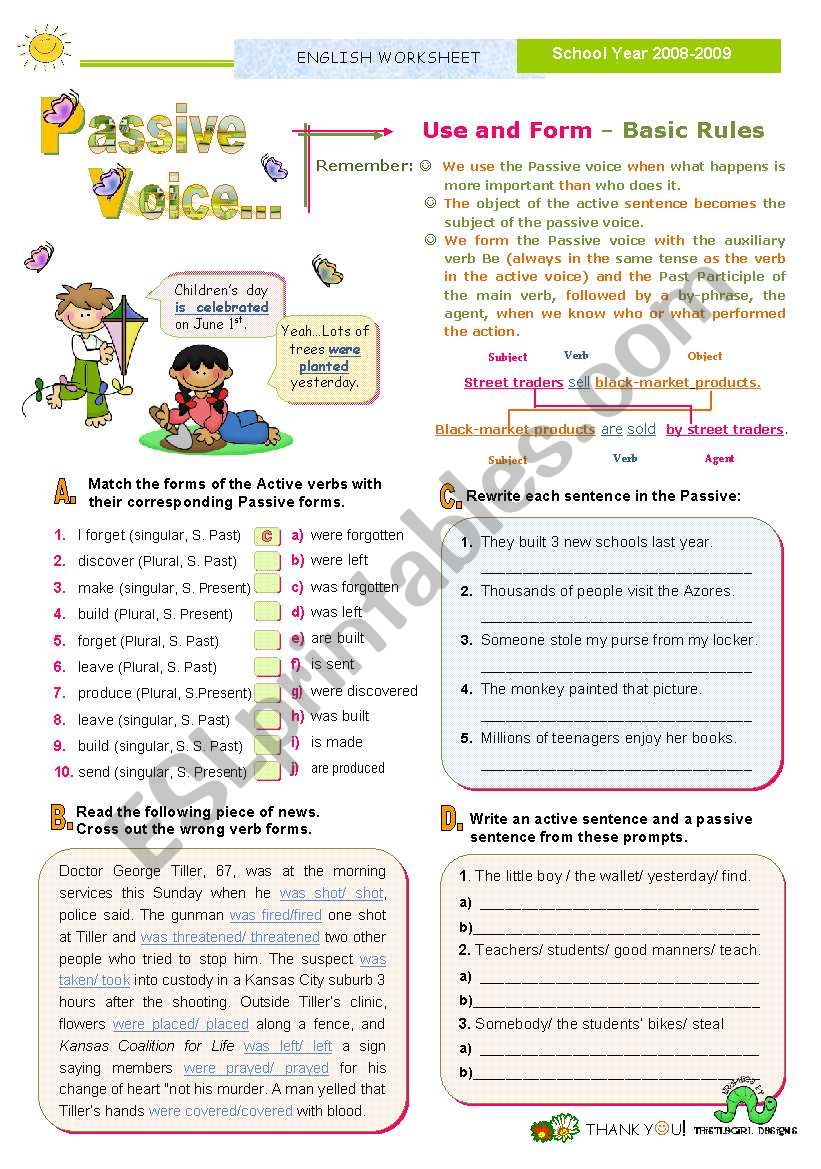
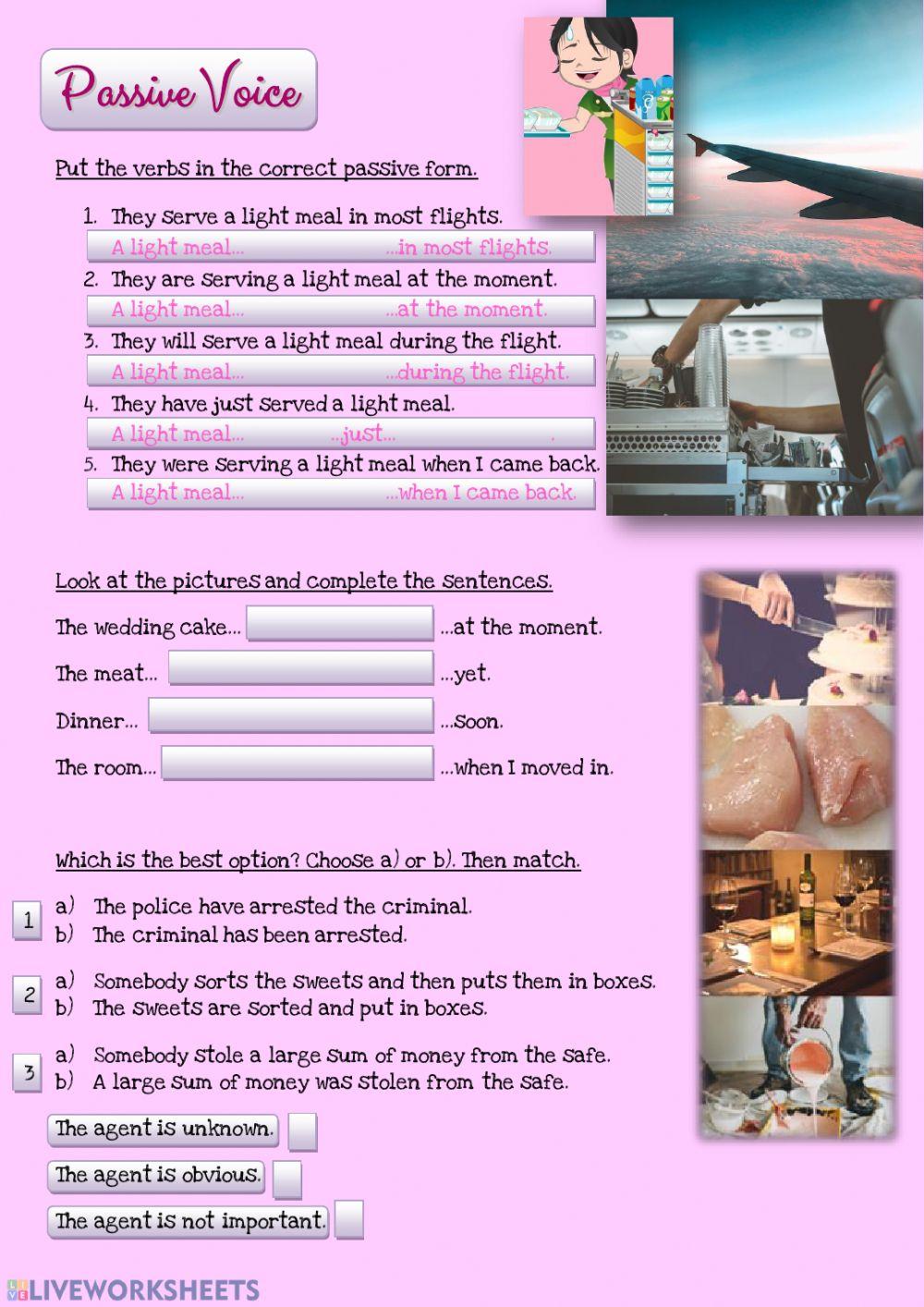

These complexities highlight why generic grammar exercises often fall short. Students require targeted, comprehensive Passive voice exercises for upper-intermediate ESL worksheets that address these specific areas of challenge and reinforce appropriate usage.
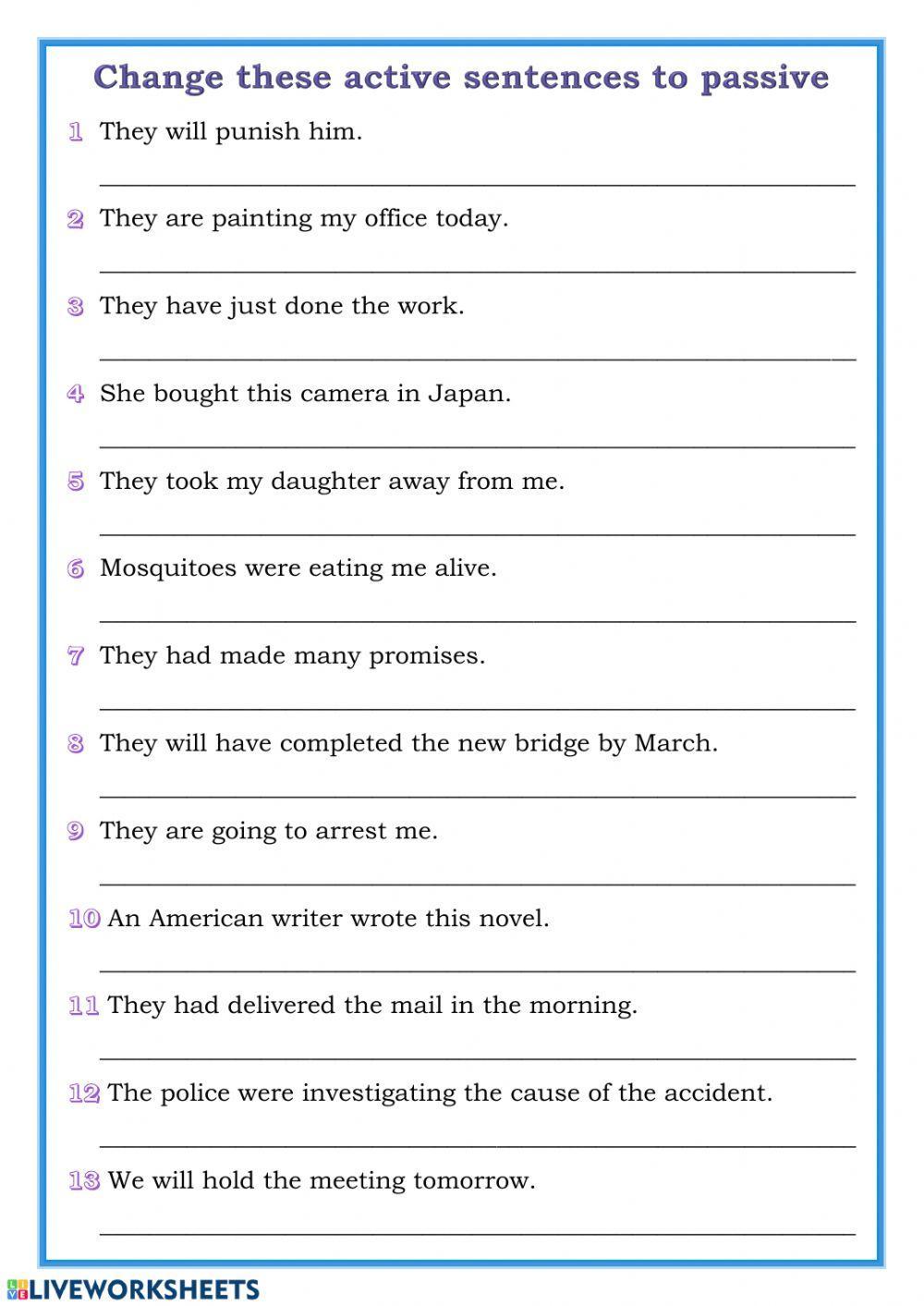
Essential Components of Effective Passive Voice Worksheets
To truly facilitate mastery, effective worksheets for upper-intermediate learners should incorporate a diverse range of exercise types and focus on specific grammatical nuances.

1. Variety of Exercise Types:
- Transformation Drills (Active to Passive & Passive to Active): These are foundational but should progress in complexity, including sentences with multiple clauses, phrasal verbs, and various tenses. Reverse transformation (passive to active) is equally important for understanding the underlying active structure.
- Gap-Fill Exercises: Students complete sentences by choosing the correct passive form of a given verb, often requiring them to consider tense, modals, and subject-verb agreement.
- Sentence Completion/Construction: Providing a subject and a verb, students construct a sentence in the passive voice, prompting them to think about context and appropriate tense/modal usage.
- Error Correction: Presenting sentences with common passive voice errors (e.g., incorrect auxiliary verb, missing past participle, misplaced agent) encourages critical thinking and error identification.
- Re-ordering Scrambled Sentences: Students re-order jumbled words to form grammatically correct passive sentences, reinforcing word order.
- Contextualized Cloze Passages: Integrating passive voice forms within a longer text (e.g., a news report, a scientific description, a historical account) helps students see the structure in a natural context and understand its function.
- Matching Exercises: Matching active sentences to their passive counterparts, or matching parts of sentences to form complete passive structures.

2. Focus on Specific Structures and Functions:
- Dedicated Sections for Modal Passives: Exercises that specifically practice "can be done," "should have been done," "might be seen," etc.
- Causative Passive Practice: Scenarios where students need to use "have/get something done," distinguishing it from regular passive.
- Reporting Verb Practice: Drills on "It is said that…", "He is believed to…", and variations.
- Emphasis on Agent Inclusion/Exclusion: Exercises that require students to decide whether to include "by + agent" and explain their reasoning.
- Passive with Phrasal Verbs: Specific exercises targeting common phrasal verbs in passive constructions.
- Distinguishing Active vs. Passive Use: Scenarios where students must choose between active and passive voice based on the desired emphasis or unknown agent.
3. Contextual Relevance and Authenticity:
Worksheets should move beyond isolated sentences. They should incorporate scenarios that reflect real-world usage:
- News Articles: Excerpts from news reports are excellent for demonstrating passive voice in action (e.g., "A new policy was announced," "The suspect was arrested").
- Scientific or Technical Descriptions: These fields heavily rely on the passive voice to maintain objectivity and focus on processes (e.g., "The chemical reaction is observed," "The experiment was conducted").
- Historical Accounts: Passive voice is frequently used to describe events where the actors are less important than the events themselves (e.g., "The treaty was signed in 1919").
- Formal Announcements or Procedures: Instructions or formal notices often use the passive (e.g., "Doors must be kept closed," "All visitors are requested to sign in").
4. Clear Instructions and Answer Keys:
For both teachers and self-studying students, clear, concise instructions are paramount. Comprehensive answer keys are also crucial, allowing students to check their work and understand their mistakes. Explanations within the answer key for particularly tricky items can be highly beneficial.
5. Gradual Increase in Difficulty:
Worksheets should ideally be structured to start with slightly less complex passive forms and gradually introduce more challenging ones, building confidence as students progress.
Designing Your Own or Selecting the Best Worksheets
When creating your own Passive voice exercises for upper-intermediate ESL worksheets or choosing from existing resources, consider the following:
- Analyze Student Needs: Identify specific areas where your upper-intermediate students struggle most with the passive voice. Is it modal passives? Reporting verbs? Or simply knowing when to use it? Tailor exercises accordingly.
- Integrate Skills: Can the passive voice exercises be combined with reading comprehension, listening activities, or even speaking prompts? For instance, after completing a cloze passage, students could discuss the topic using passive voice, or describe a process.
- Engaging Content: Use topics that are interesting and relevant to upper-intermediate learners. Current events, social issues, scientific discoveries, or historical mysteries can make practice more engaging.
- Scaffolding: Provide support where needed. For example, for a challenging transformation exercise, provide the first word of the passive sentence or a hint about the tense.
- Differentiation: Consider including some optional, more challenging exercises for stronger students, or providing simplified versions for those who need extra support.
Implementation Strategies in the Classroom
Worksheets are tools, and their effectiveness depends on how they are used.
- Pre-teaching/Review: Before assigning passive voice exercises, briefly review the target structures, especially the more complex ones.
- Guided Practice: Do the first few exercises together as a class to ensure everyone understands the task.
- Collaborative Work: Encourage students to work in pairs or small groups. This promotes peer teaching, discussion, and problem-solving, allowing them to clarify doubts and learn from each other.
- Feedback and Correction: Go over answers as a class. Don’t just provide the correct answer; explain why it’s correct. Address common errors and clarify misconceptions.
- Follow-up Activities: After completing the worksheets, provide opportunities for students to use the passive voice in communicative tasks, such as writing a summary of a news article, describing a scientific process, or explaining how something is made. This transition from controlled practice to freer production is crucial.
- Technology Integration: Many online platforms offer interactive passive voice exercises for upper-intermediate ESL learners, providing instant feedback and gamified learning experiences that can supplement traditional worksheets.
Benefits of Well-Designed Worksheets
The consistent use of high-quality Passive voice exercises for upper-intermediate ESL worksheets offers numerous benefits:
- Reinforced Understanding: Repeated exposure and practice solidify the grammatical rules and their application.
- Increased Accuracy: Targeted exercises help students identify and correct their common errors, leading to more grammatically precise English.
- Enhanced Fluency and Naturalness: As students become more comfortable with the passive voice, they can access it more readily in their speaking and writing, leading to more natural and sophisticated expression.
- Preparation for Academic and Professional Contexts: Mastery of the passive voice is essential for success in academic writing, formal reports, and many professional communication scenarios.
- Boosted Confidence: Successfully completing challenging exercises builds confidence, encouraging students to take on more complex linguistic tasks.
Common Pitfalls to Avoid
While designing or using worksheets, be mindful of these common issues:
- Over-reliance on Simple Transformation: If exercises are limited to just changing active to passive without context or variation, students will not develop a deeper understanding of its function.
- Lack of Context: Isolated sentences do not help students understand when to use the passive voice naturally.
- Insufficient Practice for Complex Forms: Neglecting modal passives, reporting verbs, or causative passive means students will have gaps in their knowledge.
- Ignoring the "Why": Worksheets should not just focus on how to form the passive, but also why it is used in specific situations.
Conclusion
For upper-intermediate ESL learners, achieving true proficiency in English involves mastering the subtle yet significant nuances of grammar, and the passive voice is a prime example. It is a structure that, when used appropriately, adds precision, objectivity, and sophistication to communication. Generic exercises are often insufficient to meet the specific needs of this level. Therefore, carefully designed and varied Passive voice exercises for upper-intermediate ESL worksheets are not just supplementary materials; they are indispensable tools that provide the focused practice necessary for students to confidently and accurately wield this vital grammatical form. By offering a range of exercise types, contextualized practice, and a clear progression of difficulty, these worksheets empower learners to move beyond basic comprehension and truly master the strategic application of the passive voice, preparing them for the complexities of advanced English communication.
